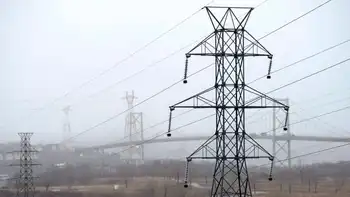Cameco offers help to TEPCO
JAPAN - When repeat flooding set back construction of Cameco Corp.'s CCO-T Cigar Lake uranium project in Saskatchewan a few years ago, its Japanese partner TEPCO could have taken combative measures to protect its minority interest.
Instead, the Japanese utility formally known as Tokyo Electric Power Co. Inc. rolled up its sleeves and pitched in with technical solutions to help solve the problem.
Now that TEPCO is in trouble as it tries to contain radiation leaks from its tsunami-stricken Fukushima nuclear complex in northeastern Japan, Cameco is a making reciprocal offer to help it recover.
The gesture comes despite a pummeling of Cameco's stock price by about 20 per cent in reaction to the incident, which has unnerved stock markets and led to a global reassessment of nuclear safety.
For Cameco, assistance includes any support it can provide, as well as backing off on demands to immediately fulfill sales contracts with TEPCO, one of its largest customers for uranium used to fuel nuclear power plants.
"It's reflective of the attitude in the industry that we are all in this boat together," Cameco chief executive officer Jerry Grandey said in an interview.
"You'll find us very willing to work with them and not engage in 'Gee, you aren't taking the uranium you should and what are you going to do to make it up?' There is not going to be any of that. We are going to work with them and help them through this episode."
The quid-pro-quo reaction is a reflection of the interdependent nuclear power industry, one that has been flourishing in recent years as a result of the so-called nuclear renaissance. Nuclear power has gained more acceptance in the decades after the 1979 Three Mile Island and 1986 Chernobyl disasters, alongside surging global demand for cleaner power sources, particularly in fast-growing countries such as China and India.
However, the ongoing Japanese nuclear crisis threatens to set back at least some of that progress as the struggle continues to gain control over the leaking nuclear complex, as well as the discovery over the weekend of elevated levels of radiation in food and water around the area.
Still, despite some countries such as nuclear powerhouse China signaling it will tighten approvals and safety procedures for new reactors, experts believe it and other countries will eventually push forward with nuclear power plans to meet surging needs for electricity. For instance Japan, which was hit by U.S. atomic bombs dropped on Hiroshima and Nagasaki in 1945, continued to pursue its goal of creating 40 per cent of its electricity from nuclear power plants by 2017, up from 30 per cent today.
Cameco is positioning itself to be part of that global growth.
"In the long run, when all of this is over and TEPCO is back focused on expanding its nuclear plants... we'll be a long-term supplier," Mr. Grandey said.
The relationship between TEPCO and Cameco dates back decades and was strengthened in the late 1990s when TEPCO became a 5-per-cent partner in the Cigar Lake project, set to begin production in 2013.
When Cameco experienced flooding at Cigar Lake in 2006 and 2008, TEPCO offered a specialized pump-storage technology that allowed water to be drained from the mine site with lower electricity costs. It also provided some of its own underground mining expertise, without prejudice.
"I think you would find in most industries the lawsuits would fly," Mr. Grandey said. "There was no blame, it was just roll-up your sleeves, understand what is needed to do to recover and get on with it."
While there has been much criticism of how the nuclear crisis in Japan is being handled by officials within the country, Mr. Grandey believes that reflects a cultural divide.
"For the West to go in there and criticize the Japanese for not living up to our standards of transparency, my own view is that is really an indictment of us and not them, because we are not understanding their culture."
The fallout expected from the Japanese nuclear crisis comes at a bad time for Mr. Grandey, who recently announced his retirement as CEO in June when he turns age 65. Until recently, it appeared he would be leaving the industry at a time of uninterrupted growth.
"I am not at all panicked, nor am I sad or depressed," Mr. Grandey said. "In the long term all of this will demonstrate the strength of the industry, and certainly will demonstrate the strength of Cameco."
Related News

Siemens Energy to unlock a new era of offshore green hydrogen production
BERLIN - To reach the Paris Agreement goals, the world will need vast amounts of green hydrogen and wind will provide a large portion of the power needed for its production.
Siemens Gamesa and Siemens Energy announced today that they are joining forces combining their ongoing wind-to-hydrogen developments to address one of the major challenges of our decade - decarbonizing the economy to solve the climate crisis.
The companies are contributing with their developments to an innovative solution that fully integrates an electrolyzer into an offshore wind turbine as a single synchronized system to directly produce green hydrogen. The companies intend to…




